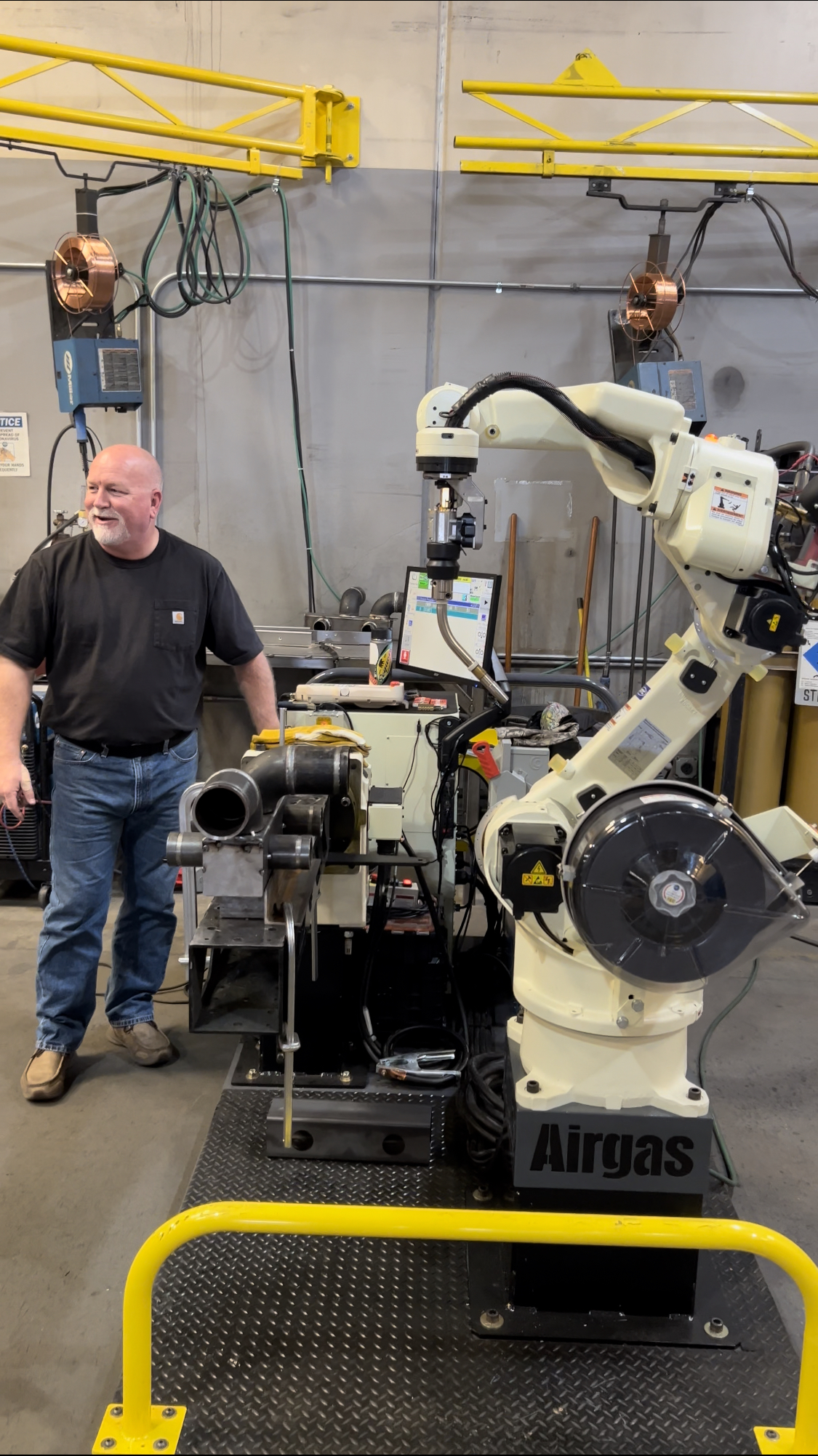From Submarines to Robots: SoCal ROC Alumnus Enjoys Sustainable Career in Welding

“The outlook for welders in the workforce is excellent. The skilled trade is vibrant and the career path for welders is dynamic in every way,” says Tom Mulvihill, a Southern California Regional Occupational Center (SoCal ROC) alumnus who has enjoyed a career of more than 30 years as a welder. “Welders are in demand. Financially speaking, I mentor welders every day and many are starting at a salary of $75,000 a year with no college debt.”
As a student at West Torrance High School in the 1980s, Mulvihill didn’t achieve the best results in his classes as a sophomore, so his counselor suggested he try a skill like welding and enroll in classes at SoCal ROC. “The counselor thought I might thrive learning a trade, and I did! I still get goosebumps thinking about my time at SoCal ROC,” said Mulvihill. “My welding instructor at the time was Jim Sopp. He became an important person in my life because of the guidance and mentoring he gave me; I’m forever thankful for his support.”
He liked that SoCal ROC classes were less structured than his high school classes and students had the freedom to work on tasks until they became proficient with no time constraints. “I felt like I had the needed freedom to learn at my own pace and master the skills with no pressure,” he said. Mulvihill loved his SoCal ROC classes so much that following his afternoon welding class, he would stay for the evening welding course from 6:00 to 10:00 p.m., as well as attend summer classes. At the time, high school graduation requirements were different than today. Mulvihill was able to graduate from high school the second semester of his junior year because he had amassed 150 extra elective credits attending SoCal ROC! “My time at SoCal ROC helped me exponentially,” he said. “Graduating from high school early allowed me to have more time to study for my military entrance exam.”
At the suggestion of his grandfather, Mulvihill decided to enlist in the U.S. Navy as a welder. Again, structured learning and test taking challenged him. “I failed my test to get into the Navy several times, however, I finally made it in,” he said. “Ironically, by the time I took my first test once in the Navy, I was achieving honors student recognition!” His Naval career spanned six years and he worked as a welder in submarine building and nuclear energy.
Following his time in the Navy, Mulvihill remained in Connecticut where he had been stationed and secured a job in the aerospace industry as a welder in the military defense field. “It was an awesome environment to work in during that time because defense budgets were abundant in the late 1980s and early 1990s.”
Today, Mulvihill is a weld process specialist at Airgas USA, LLC, providing advanced welding/cutting automation solutions, and manufacturing process improvements to customers in manufacturing and other business sectors. He also trains companies in the use of robotic welders and serves as a welding consultant to educational institutions. After working in aerospace, he went into commercial manufacturing which is where he learned about welding robots and fell in love with them. “There will always be a place for human welders even with the arrival of increased automation in manufacturing,” he said. “My robot is dumb as rocks and only knows what I tell it to do every day! A robot is just a really nice tool for a human welder of independent thought and knowledge. It takes knowledge of welding processes, techniques and skill to program welding robots, as well as programming and repairing them, and training others how to use them.”
Mulvihill is the perfect example of how one can sustain a lucrative career in welding and take advantage of the breadth of options available to welders with increased responsibility in their career path. Following his training at SoCal ROC, he has worked in ship building, nuclear energy, aerospace/military defense, robotics, commercial manufacturing, and transportation.
SoCal ROC offers welding courses through its School of Engineering and Design in four Welding Modules. Welding classes are offered by module with morning and afternoon sessions four days per week for nine weeks, or two nights per week for a semester for each module. The median wage in 2021 for welders, cutters, solderers, and brazers in California was $47,178 annually, or $22.68 hourly, according to the California Employment Development Department.
